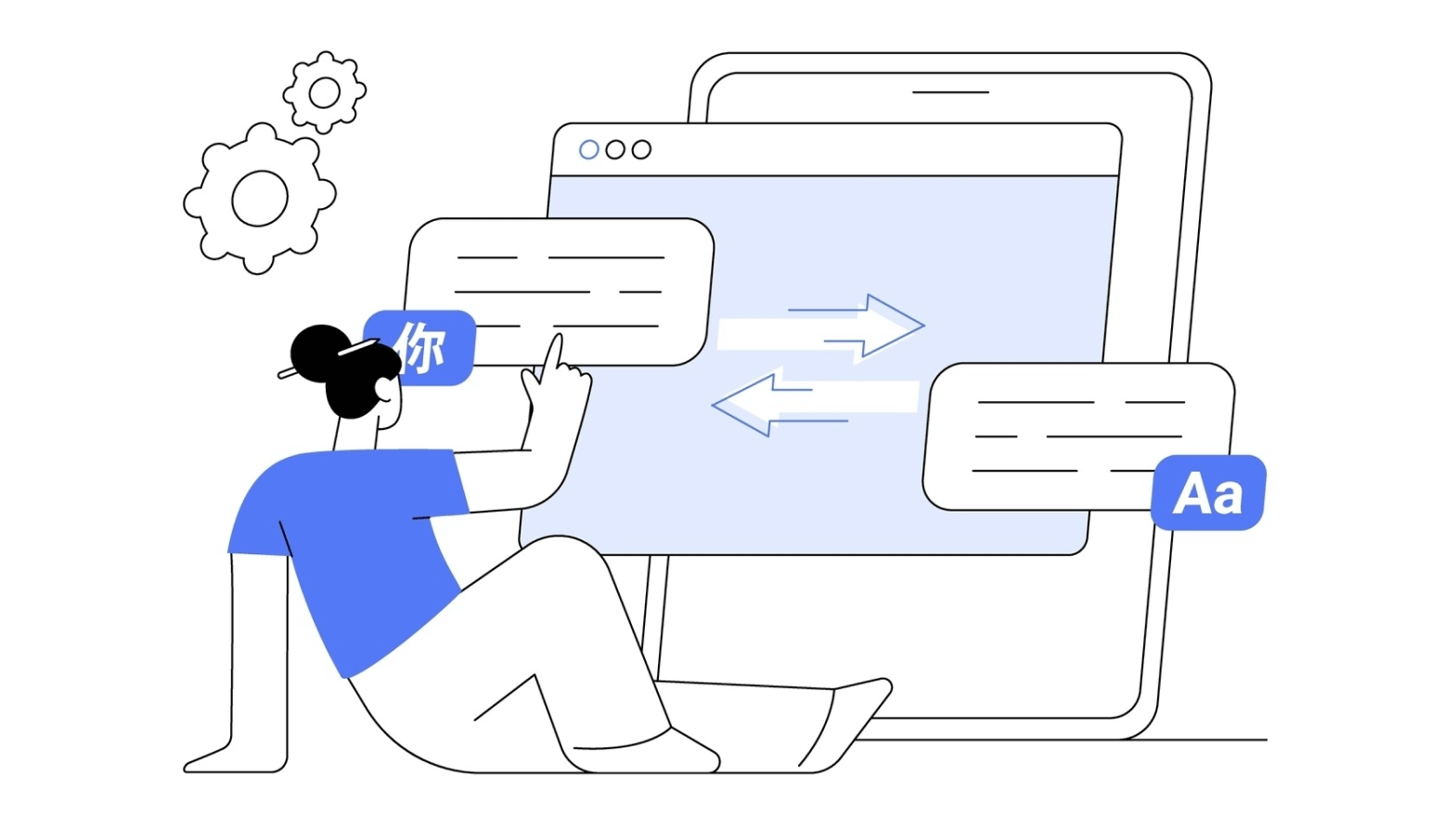In 2023, the global demand for translation services surged to an unprecedented $57 billion, driven by the exponential growth of digital content and international business expansion. With over 7,000 languages spoken worldwide, the need for efficient, accurate, and rapid translation has never been more critical.
Amidst this booming demand, machine translation has emerged as a game-changer for language service providers (LSPs). By leveraging advanced technologies, MT is transforming how LSPs operate, enhancing speed, cost-efficiency, and scalability. This article explores the concept of machine translation and delves into its growing significance within the language service industry.

What is machine translation?
Machine translation (MT) is the use of computer algorithms to translate text automatically from one language to another. This technology has advanced significantly over the years and plays a crucial role in modern translation services. For a deeper understanding of how MT works and its evolution, check out this article on machine translation.
The role of machine translation in LSPs
Machine translation has become an indispensable tool for language service providers, revolutionising their operations by offering remarkable efficiency, cost-effectiveness, and scalability benefits. Here's how MT is impacting LSPs:
Efficiency and speed
Document translation automation is a key tool for organizations that need to translate large volumes of content. Machine translation significantly accelerates the translation process by automating the initial translation of text. Unlike human translators, who may take hours or days to translate lengthy documents, MT systems can process vast amounts of text in seconds.
This rapid turnaround is particularly beneficial for LSPs dealing with time-sensitive projects, allowing them to meet tight deadlines and provide quick responses to client needs. For instance, Google Translate processes over 100 billion words daily, demonstrating the immense capacity and speed of MT systems.
Cost-effectiveness
One of the most compelling advantages of MT is its ability to reduce costs for both LSPs and their clients. By automating the bulk of translation work, LSPs can minimise the reliance on human translators for the initial draft. This not only reduces labour costs but also allows human translators to focus on higher-value tasks, such as editing and quality assurance.
Clients, in turn, benefit from lower translation fees, making professional translation services more accessible and affordable. In fact, companies like eBay have reported saving millions of dollars annually by integrating MT into their translation workflows.
Scalability
Machine translation is uniquely equipped to handle large volumes of content efficiently. Traditional translation methods can become bottlenecks when faced with extensive documents or massive datasets. In contrast, MT systems can scale effortlessly, processing millions of words with consistent quality and speed.
This scalability is crucial for LSPs managing large-scale projects, such as translating entire websites, legal documents, or user manuals, enabling them to deliver comprehensive translation solutions without compromising on performance or accuracy. Machine translation for legal documents is becoming increasingly important. For example, the European Union uses MT to handle the translation of documents into its 24 official languages, ensuring smooth communication and documentation across member states.
Lingvanex: advanced neural translations for your needs
For organisations with specific security or customization needs, Lingvanex offers on-premise solutions that ensure complete control over the translation process and data security.
- Neural network-based translations
Using advanced neural network algorithms, Lingvanex On-premise Machine Translation Software delivers highly accurate and contextually appropriate translations. This technology allows the system to learn and improve over time, resulting in translations that accurately capture the nuances of human language. - Real-time translations
The solution offers real-time translation capability, making it ideal for instant messaging, video calls, and other live communication scenarios. This feature is especially useful for companies and individuals who need immediate translation without delays. - Multi-platform support
Lingvanex is designed as a universal solution that supports a wide range of platforms, including web, mobile, desktop, and even smart devices. As a result, users can access high-quality translations regardless of device or operating system. - Customization options
The translator allows users to customise translation systems for specific industries or business needs, increasing the accuracy and relevance of translations in specialised fields, such as legal, medical, or technical.
Challenges and solutions
Despite the many benefits that come with the use of machine translation by language service providers, many are still wary of its adoption. Let's look at the reasons behind these concerns and the ways they can be addressed.
Accuracy and nuances
One of the major challenges of machine translation is accurately conveying context and cultural nuances. MT systems can have difficulty translating idioms, sarcasm, and culturally specific expressions. To address this problem, language service providers can implement hybrid approaches that combine machine translation with subsequent human editing.
Security
Since MT systems often handle sensitive information, data privacy and security issues come to the forefront. LSPs can address this issue by implementing strong encryption protocols, secure cloud storage, and strict data handling policies. Some providers may also offer on-premises MT solutions for customers with heightened security requirements, ensuring that sensitive data never leaves the customer's secure environment. For more on secure machine translation, see Lingvanex's article.
Integration
Integrating MT systems into existing workflows can be complex and disruptive. To mitigate these challenges, LSPs can utilise MT with user-friendly interfaces and APIs that allow for easy integration with popular content management systems and translation management tools. They can also provide comprehensive training and support to help clients and translators adapt to new workflows enhanced with MT.
Resistance to change
There is resistance to the introduction of MT among traditional translators and some clients. LSPs can address this through educational initiatives, demonstrating the benefits of MT in improving productivity rather than replacing human expertise. They can also involve translators in the MT development process, utilising their linguistic expertise to improve systems and create more translator-friendly tools.
Conclusion
MT technologies significantly accelerate the translation process by reducing costs and providing scalability. This enables LSPs to respond quickly and efficiently to customer demands, making services more accessible and cost-effective.
However, successful implementation of MT requires addressing challenges related to translation accuracy, data security, and integration into existing workflows. Hybrid approaches and advanced technologies such as neural networks can help overcome these challenges, ensuring high-quality and culturally accurate translations.
LSPs should actively consider integrating MT technologies such as Lingvanex to improve the efficiency and quality of their services. Educational initiatives and involving translators in the development process will help mitigate resistance to change and ensure successful implementation.
Machine translation opens up new horizons for language service providers, allowing them not only to meet the growing demand for scalable translation services but also to significantly improve their quality and accessibility. Implementing these technologies today is an investment in the future where language barriers will no longer be an obstacle to global communication and collaboration.




